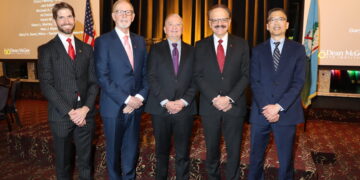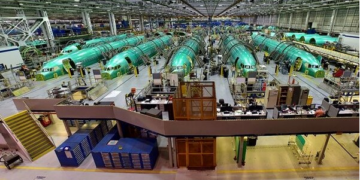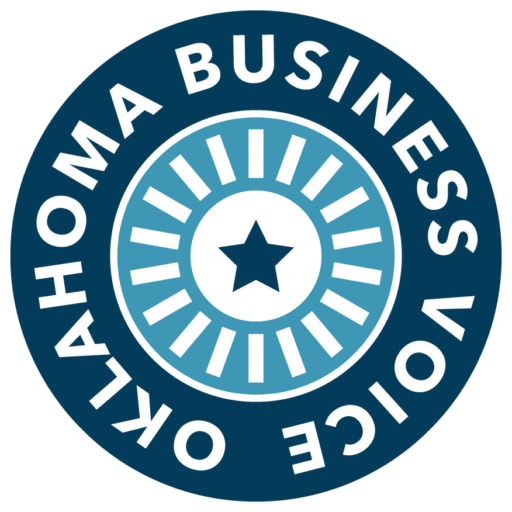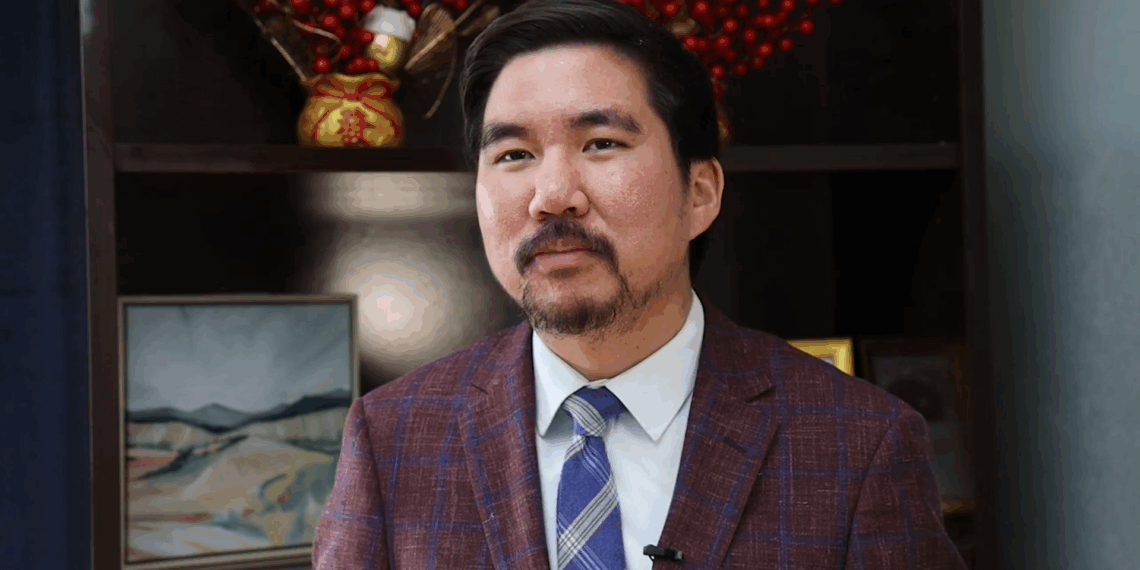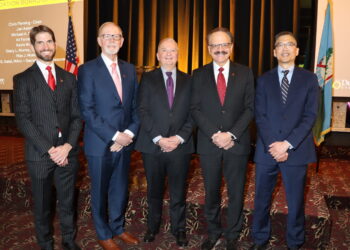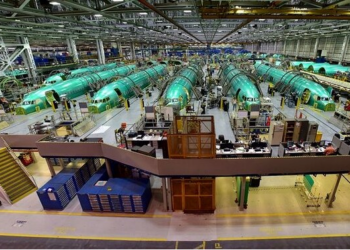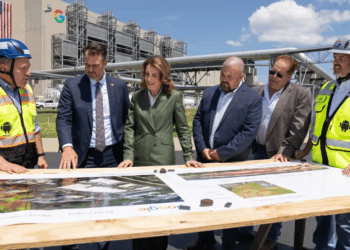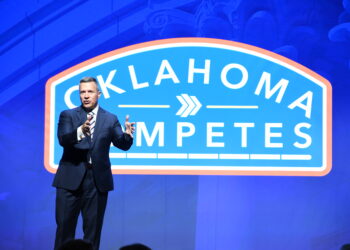OKLAHOMA CITY (OBV) – Daniel Pae is a busy man, advocating for businesses as both a state representative and the new leader of The Greater Oklahoma City Asian Chamber of Commerce.
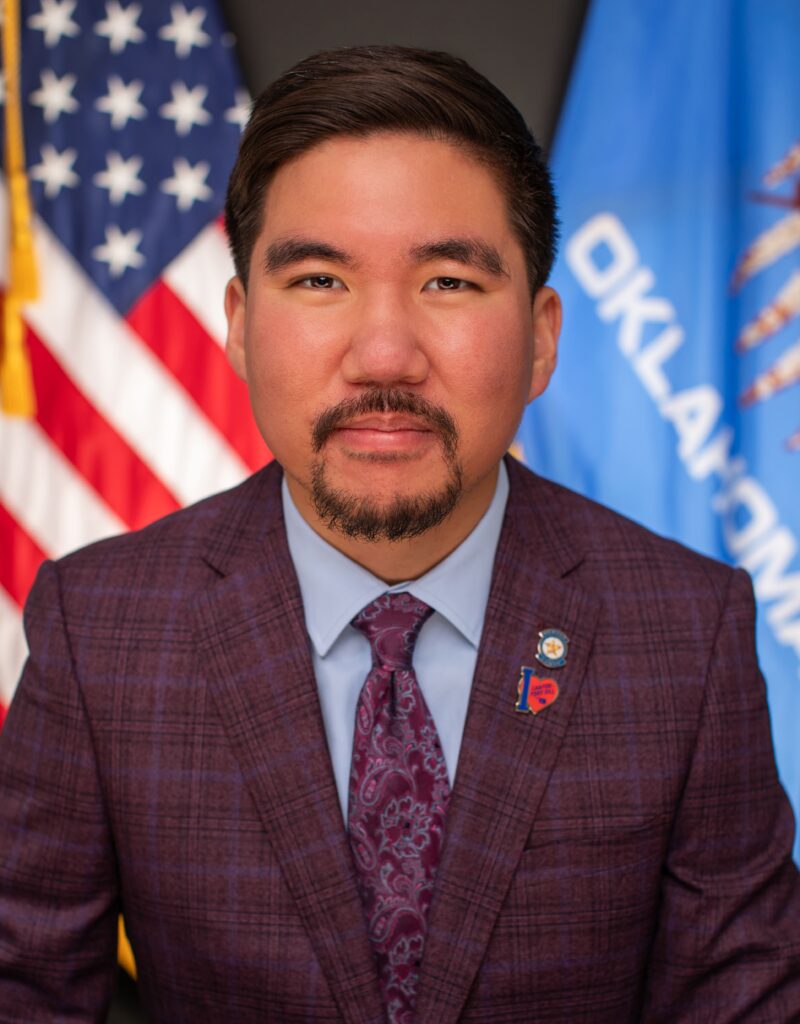
Pae became the executive director of the Greater OKC Chamber earlier this year.
“Daniel’s dedication to our mission and his proven leadership skills make him the ideal choice to lead the OKC Asian Chamber of Commerce,” said Victor Flores, president of the OKC Asian Chamber board. “His experience within the community and his passion for fostering economic growth will be invaluable as we continue to serve our members.”
A Lawton native, Pae routinely travels to the State Capitol in Oklahoma City to represent House District 62 (West Lawton) in the Oklahoma House of Representatives, a duty he has held since being elected to the House in 2018.
Public service has come naturally to Pae.
Pae is the House’s assistant majority whip. He was named a co-vice chair of the House State and Federal Redistricting Committee following the decennial U.S. census in 2020.
The International Leadership Foundation (ILF) awarded him the 2019 Rising Star Award for his professional achievements and dedication to helping the Asian Pacific American community.
The Journal Record recently named Pae one of its Oklahoma Achievers Under 40 for 2025. The honor is presented to Oklahomans under the age of 40 who have made an impact on the state.
Pae spoke one on one with Oklahoma Business Voice about his plans for the OKC Asian Chamber, the state of Oklahoma City’s Asian business community and how young Asian community members can launch their business future. The interview is shared below:
What does it mean for you, personally and professionally, to be chosen to be the director of the Greater Oklahoma City Asian Chamber of Commerce?
Pae: Well, thank you for the question. I think both personally and professionally, I’m immensely grateful to be in this position. I do believe in terms of leadership, you should always answer the call of duty.
When it comes to the Greater Oklahoma City Asian Chamber of Commerce, I’ve had the honor of serving as a board member. For the past couple of years, [I’ve served] as the advocacy chair working on events at the Oklahoma State Capitol to encourage and increase civic engagement with our chamber members. And then, [I served] as board secretary and got to know the rest of the executive committee members quite well.
I do want to thank my predecessor, Cassie Fluitt. Because if you think about this, the Asian Chamber is only in year three. Her leadership was incredibly helpful to laying a strong foundation for future success. When she decided to step down, we had a conversation as far as who could take place without disrupting too much of what was already planned for the remainder of the fiscal year. And there are a lot of exciting plans, which I’m sure we’ll get into. We wanted to make sure there’s continuity in leadership. I put myself forward as a candidate after a lot of prayer and consideration. Based of my experience with this organization, I felt that I could do the best possible job in this role. And it’s been incredible.
I already came in with existing relationships with our board of directors and know what’s to come on the horizon. It’s been very rewarding. And, as a Korean-American, I’m mindful of the fact that I’m part of the fastest growing demographic in the country when it comes to Asian-Americans as a whole. Growing up in Lawton-Fort Sill, we did have a number of Asian-Americans, but nowhere near as many as here in the Oklahoma City metro. So, I was excited when I found out about the Asian Chamber back in 2022. And I thought that there was going to be so much opportunity for this organization.
At the time, I didn’t consider myself in this type of leadership role. I just wanted to be involved as a participant. But one thing led to another. And having served on the board of directors now as the executive director, I want to continue being bold moving forward. But at the end of the day, I think there’s a lot of potential for us as an organization. And I’m excited to see where we go from here.
What are some top priorities and initiatives that you want to take on? Did you come into this job with priorities and plans?
Pae: We have a number of events for the next few months. We [had] a Business After Hours in March. We have a Business Commons, which is the first time we’re hosting one as a chamber. We also have the third annual advocacy at the State Capitol. We have another Business After Hours in June.
We’ll have a strategic planning retreat. And we’ll have some new board members come on board. We want to make sure we think about long term where we go from there.
I would like to see us focus on membership, and that’s bringing in new members as well as taking care of our existing members and building those relationships. Fundraising – any organization like this and the Chamber of Commerce thrives when it comes to increasing fundraising opportunities. That also means bringing in more sponsors, too. I think in terms of building relationships and focusing on fundraising, those are my priorities moving forward.
How will your work in the House of Representatives and your leadership position in the Asian Chamber inform one another? How will they benefit one another?
Pae: That’s a great question. I know it’s nontraditional to have two very important leadership roles at the same time. And I’m in a chapter in my life where there’s a lot of commuting between Lawton and Oklahoma City as a state representative and now as the executive director of a chamber of commerce.
I think both are similar roles in terms of the importance of communication, the importance of relationships, and the importance of having long-term vision. And so, there are a lot of skills I’ve learned the past seven years as a state legislator that I would bring to the Chamber of Commerce. And I’m excited to see where we go from here.
I’ve made this point before, this whole notion of urban Oklahoma versus rural Oklahoma and how we separate ourselves, I disagree with that. I think what’s good for the Oklahoma City metro is good for Lawton and vice versa. A rising tide lifts all boats. And we need to make sure we’re investing in all parts of the state. Between my, two communities here, there are a lot of people from Lawton who come up for Thunder games or OU games and other things. And a lot of people from Oklahoma City come down to Madison Park and the Wichita Mountains. This should not be an us versus them situation. I hope to be a bridge between these communities and for the entire state of Oklahoma, that we could have this type of organization, this type of Asian Chamber of Commerce in other communities. I hope I can be the example for that. And who knows? Maybe we’ll do another interview a year from now and we’ll see how many other chambers have developed across Oklahoma.
I think that would be tremendous progress, and that’s what, personally, I’d like to see happen.
Speaking about other chambers, what kind of connections and growth efforts do you hope the Greater OKC Asian Chamber will have with other chambers, such as The State Chamber of Oklahoma and the Greater Oklahoma City Chamber?
Pae: I think there’s absolutely a number of possibilities when it comes to the Asian Chamber partnering with other chamber organizations. Before I take those positions, it’s my understanding that we did become members of The State Chamber. So, there’s a lot of opportunity there for collaboration.
It’s logical, in my view, that we work with the Greater Oklahoma City Chamber itself. This is a big metropolitan area. And you think about what’s on the horizon for Oklahoma City. Something like this, where we can be a voice for Asian-owned businesses and entrepreneurs. We’re approaching the 300 mark, give or take now, and only in year three. So, it’s incredible progress that we’ve made.
I’m a big believer in collaboration. I truly believe that great things can happen when you work together and you try to develop best practices and identify good ideas. I think in terms of leadership, you can get a lot done if you don’t mind who gets the credit. I look forward to meeting other chamber leaders. This is definitely a new leadership position for me.
And so, I come in with humility and intellectual curiosity and having an open mind about what it takes to be an effective executive director for this organization. And it’ll be a learning process. But I do believe learning is a lifelong endeavor. And so, I’m excited to meet other leaders in this space and how I can grow in this capacity.
How do you feel the Asian Chamber of Commerce has helped OKC’s Asian community and its businesses as well as the city’s business community at large?
Pae: I think there are a number of ways that the Greater Oklahoma City Asian Chamber of Commerce has contributed to this metropolitan area. I think number one, raising awareness for the caliber of talent when it comes to this community and all the different industries that are represented. I think second, building community. Even growing up as an Asian American in Lawton, as I mentioned before, there weren’t too many other Asian Americans. So, by simply being in the same room, whether it’s for a business after hours or a lunch and learn and trying to get good ideas from each other, I think that’s incredibly helpful, especially for those who are just getting started in their business or their entrepreneurship endeavor.
Having the opportunity to be in the same room and to learn from other experts and other leaders, that, to me, is one of the fundamental purposes of a chamber of commerce. And the Oklahoma City metro has around 68,000 Asian-Americans, give or take. So, we’re just getting started. There are more chances for us to bring everyone together and to work together.
I truly believe that the best days are ahead for us as a state. And I’m doing everything I can in all my leadership capacities to ensure that remains the reality, that we have good days ahead and bountiful opportunities for economic development and prosperity.
Do you feel that there’s more opportunity for growing the Greater OKC Asian Chamber’s membership?
Pae: Like I said before, one of my goals as executive director is to increase our membership. And I think one area that we as a board have discussed, we have quite a few colleges and universities within this metro area.
I think if you invest in that next generation of leadership—it’s very similar to what I’ve focused on in Lawton—if you engage early on, if you show these soon-to-be college graduates that there is opportunity right here in Oklahoma after you graduate—workforce opportunities, job opportunities, etc.—then they’re more likely to stay after they graduate, versus leave and go to another part of the country.
That, to me, is an area that is incredibly critical, that we engage with our college universities, that we look for those young professionals who are eager to learn about what it takes to be a successful business owner, a successful entrepreneur. And we have so many talented members of our chamber who can provide a mentorship role for those individuals. I think long term, that’s how we can increase our membership if we engage with that particular demographic, make those investments early on and be proactive.
As someone who understands the role of mentorship and why you can have so many wonderful, insightful conversations with people who have experience in any given sector, I want to make sure that’s a priority for us as an organization. I’ve had several mentors in my life. I’m more reflective now about how one or two conversations have changed my life for the better. If we can provide that same opportunity experience to any future member of the, Asian Chamber, particularly those in the young professional category, I think that’s a very worthwhile endeavor for us as an organization.
How would you describe the growth and diversification of business and entrepreneurship among OKC’s Asian business community?
Pae: I think the data speaks for itself. There is tremendous economic contribution from the Asian American community. And we’re only getting started. I think in the decades to come, you’re going to have more, contributions and more talent that’s cultivated. And this type of organization can be the way to further that growth.
For the upcoming business conference, we’re going to have several different workshops that focus on developing skillsets and networking within this community and beyond.
I think when it comes to the contributions of Asian Americans to this metropolitan area, to this state, frankly, I think there’s so much potential. And again, we’re only in our third year as an organization.
And I know, speaking with other leaders in this field, this is the critical period where you have to make these proactive investments and you have to think long term about where are we now, a decade and beyond? And those are conversations I look forward to having with my fellow board members and seeing where we go from here.
What further growth do you want to see within OKC’s Asian business community? And what new types of businesses do you want to see emerge in OKC?
Pae: I’ve had the opportunity to travel abroad to countries like Taiwan and South Korea. And they’re very interested in making investments and bringing businesses to the United States. I think Oklahoma, with our tax and regulatory systems, is a prime spot to have many of those businesses come right here. And certainly if they are interested in learning more about our chambers, specifically, we have many experts and leaders who can be great resources.
I think we have to be mindful that this is a global economy and that we have so many opportunities to partner, not just with other states, but also other countries. And that can lead to more jobs, more economic opportunities. I think all of those are great for our economy as a whole.
I absolutely want our organization to partner with the Department of Commerce, for example, and see what businesses we can try to bring into Oklahoma and work together to make that a reality.
Gov. Stitt toured some countries in Asia. He spoke with different heads of corporations in those nations about potentially expanding to Oklahoma. How do you feel about how that tour went? And what do you think about the prospects of such expansions?
Pae: I personally was not able to join that tour. I’ve heard from the folks who did attend that there were important relationships that were built with leaders from those different countries; also, from the private sector, from those companies who participated and joined them on the delegation trip. I hope that there will be follow-ups and check-ins on how those conversations have gone since the delegation went abroad.
I do think it’s important that these types of opportunities where you meet prospective businesses or go to a country and meet their leaders, there have to be follow-ups and there has to be check-ins with where things stand right now. That’s how you make progress. Progress is very challenging to do overnight. You have to be constantly working diligently on making sure that you’re moving the ball forward.
I’m glad that this governor has prioritized developing those partnerships with other countries, and I’m hopeful that can lead to solid economic growth and development moving forward.
What kind of outreach do you want to see from the Greater Oklahoma City Asian Chamber of Commerce to help young Asian community members become entrepreneurs and business owners?
Pae: I turn 30 later this year, and I’ve had friends who’ve moved out of Oklahoma to various other states. I want to stay here. This is home for me. My mom and dad are still in Lawton—they’re not going anywhere. So, I have a personal understanding on this issue when it comes to keeping young professionals in the Oklahoma City metro and beyond.
I do think there’s so much potential for us, in the millennial generation, that we can bring to the table. I think particularly when it comes to young, aspiring Asian American leaders and future entrepreneurs, the Asian Chamber can certainly be an organization they take advantage of. Because as a member, you have the opportunity to attend various events where you can meet other established leaders in whatever sector or industry you want to jump into.
And, as I said before, if we can cultivate that mentorship culture and try to connect any young Asian American within the metro area here—if they want to go into finance or real estate or government—they have someone they can contact.
I would definitely want to cultivate those connections and try to build those relationships for the long term. That is absolutely great for Greater Oklahoma City Asian Chamber, and that is also great for the Oklahoma City metro and the state of Oklahoma as well.


